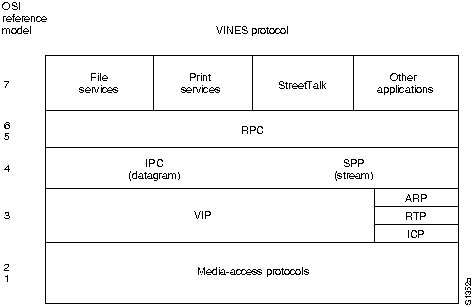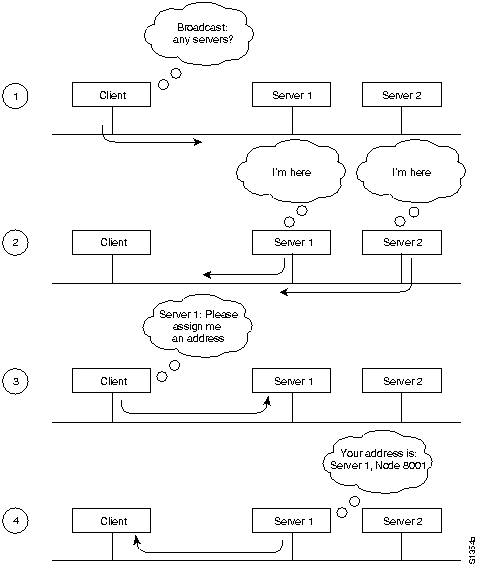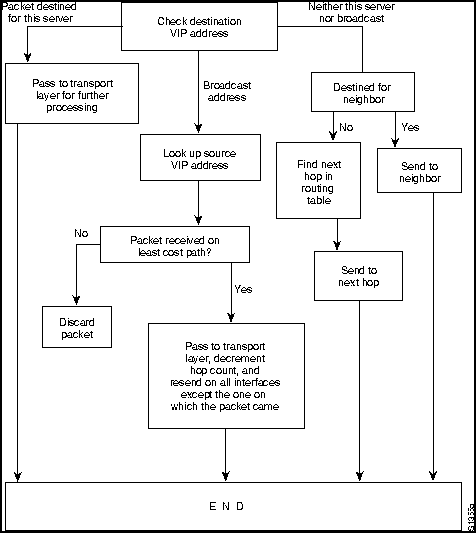|
|
Banyan Virtual Integrated Network Service (VINES) implements a distributed network operating system based on a proprietary protocol family derived from Xerox Corporation's Xerox Network Systems (XNS) protocols (see Chapter 22, "Xerox Network Systems"). VINES uses a client-server architecture in which clients request certain services, such as file and printer access, from servers. Along with Novell's NetWare, IBM's LAN Server, and Microsoft's LAN Manager, VINES is one of the best-known distributed system environments for microcomputer-based networks.
The VINES protocol stack is shown in Figure 21-1.
Figure 21-1 : VINES Protocol Stack

The lower two layers of the VINES stack are implemented with a variety of well-known media-access mechanisms, including High-Level Data Link Control (HDLC) (see Chapter 11, "Synchronous Data Link Control and Derivatives"), X.25 (see Chapter 12, "X.25"), Ethernet (see Chapter 5, "Ethernet/IEEE 802.3"), and Token Ring (see Chapter 6, "Token Ring/IEEE 802.5").
VINES uses the VINES Internetwork Protocol (VIP) to perform Layer 3 activities (including internetwork routing). VINES also supports its own Address Resolution Protocol (ARP), its own version of the Routing Information Protocol (RIP) called the Routing Table Protocol (RTP), and the Internet Control Protocol (ICP), which provides exception handling and special routing cost information. ARP, ICP, and RTP packets are encapsulated in a VIP header.
VINES Internetwork Protocol (VIP)
VINES network-layer addresses are 48-bit entities subdivided into network (32 bits) and subnetwork (16 bits) portions. The network number is better described as a server number because it is derived directly from the server's key (a hardware module that identifies a unique number and the software options for that server). The subnetwork portion of a VINES address is better described as a host number because it is used to identify hosts on VINES networks. Figure 21-2 illustrates the VINES address format.
Figure 21-2 : VINES Address Format

The network number identifies a VINES logical network, which is represented as a two-level tree with the root at a service node. Service nodes, which are usually servers, provide address resolution and routing services to clients, which represent the leaves of the tree. The service node assigns VIP addresses to clients.
When a client is powered on, it broadcasts a request for servers. All servers that hear the request respond. The client chooses the first response and requests a subnetwork (host) address from that server. The server responds with an address consisting of its own network address (derived from its key), concatenated with a subnetwork (host) address of its own choosing. Client subnetwork addresses are typically assigned sequentially, starting with 8001H. Server subnetwork addresses are always 1. The VINES address selection process is shown in Figure 21-3.
Figure 21-3 : VINES Address Selection Process

Dynamic address assignment is not unique in the industry (AppleTalk also uses this process), but it is certainly not as common as static address assignment. Since addresses are chosen exclusively by a particular server (whose address is unique as a result of the uniqueness of the hardware key), there is very little chance of a duplicate address (a potentially devastating problem on Internet Protocol [IP] and other networks).
In the VINES network scheme, all servers with multiple interfaces are essentially routers. Clients always choose their own server as a first-hop router, even if another server on the same cable provides a better route to the ultimate destination. Clients can learn about other routers by receiving redirect messages from their own server. Since clients rely on their servers for first-hop routing, VINES servers maintain routing tables to help them find remote nodes.
VINES routing tables consist of host/cost pairs, where host corresponds to a network node that can be reached and cost corresponds to a delay, expressed in milliseconds, to get to that node. RTP helps VINES servers find neighboring clients, servers, and routers.
Periodically, all clients advertise both their network-layer and their Media Access Control
(MAC)-layer addresses with the equivalent of a hello packet. Hello packets indicate that the client is still operating and network-ready. The servers themselves send routing updates to other servers periodically. Routing updates alert other routers to changes in node addresses and network topology.
When a VINES server receives a packet, it checks to see if the packet is destined for another server or if it's a broadcast. If the current server is the destination, the server handles the request appropriately. If another server is the destination, the current server either forwards the packet directly (if the server is a neighbor) or routes it to the next server in line. If the packet is a broadcast, the current server checks to see if the packet came from the least-cost path. If not, the packet is discarded. If so, the packet is forwarded on all interfaces except the one on which it was received. This approach helps diminish the number of broadcast storms, a common problem in other network environments. The VINES routing algorithm is shown in Figure 21-4.
Figure 21-4 : VINES Routing Algorithm

The VIP packet format is shown in Figure 21-5.
Figure 21-5 : VIP Packet Format

The fields of a VIP packet are as follows:
RTP distributes network topology information. Routing update packets are broadcast periodically by both client and service nodes. These packets inform neighbors of a node's existence and also indicate whether the node is a client or a service node. Service nodes also include, in each routing update packet, a list of all known networks and the cost factors associated with reaching those networks.
Two routing tables are maintained, a table of all known networks and a table of neighbors. For service nodes, the table of all known networks contains an entry for each known network except the service node's own network. Each entry contains a network number, a routing metric, and a pointer to the entry for the next hop to the network in the table of neighbors. The table of neighbors contains an entry for each neighbor service node and client node. Entries include a network number, a subnetwork number, the media-access protocol (for example, Ethernet) used to reach that node, a local-area network (LAN) address (if the medium connecting the neighbor is a LAN), and a neighbor metric.
RTP specifies four packet types:
RTP packets have a 4-byte header consisting of the following 1-byte fields:
Both the controller type and the machine type fields are used for pacing.
Address Resolution Protocol (ARP)
ARP protocol entities are classified as either address resolution clients or address resolution services. Address resolution clients are usually implemented in client nodes, whereas address resolution services are typically provided by service nodes.
ARP packets have an 8-byte header consisting of a 2-byte packet type, a 4-byte network number, and a 2-byte subnetwork number. There are four packet types: a query request, which is a request for an ARP service; a service response, which is a response to a query request; an assignment request, which is sent to an ARP service to request a VINES internetwork address; and an assignment response, which is sent by the ARP service as a response to the assignment request. The network number and subnet number fields only have meaning in an assignment response packet.
ARP clients and services implement the following algorithm when a client starts up. First, the client broadcasts query request packets. Then, each service that is a neighbor of the client responds with a service response packet. The client then issues an assignment request packet to the first service that responded to its query request packet. The service responds with an assignment response packet containing the assigned internetwork address.
Internet Control Protocol (ICP)
ICP defines exception notification and metric notification packets. Exception notification packets provide information about network-layer exceptions; metric notification packets contain information about the final transmission used to reach a client node.
Exception notifications are sent when a VIP packet cannot be routed properly, and the error subfield in the VIP header's transport control field is enabled. These packets also contain a field identifying the particular exception by its error code.
ICP entities in service nodes generate metric notification messages when the metric subfield in the VIP header's transport control field is enabled, and the destination address in the service node's packet specifies one of the service node's neighbors.
VINES provides three transport-layer services:
As a distributed network, VINES uses the remote procedure call (RPC) model for communication between clients and servers. RPC is the foundation of distributed service environments. The NetRPC protocol (Layers 5 and 6) provides a high-level programming language that allows access to remote services in a manner transparent to both the user and the application.
At Layer 7, VINES offers file-service and print-service applications, as well as StreetTalk, which provides a globally consistent name service for an entire internetwork.
VINES also provides an integrated applications development environment under several operating systems, including DOS and UNIX. This development environment allows third parties to develop both clients and services that run in the VINES environment.
|
|
Copyright 1988-1996 © Cisco Systems Inc.